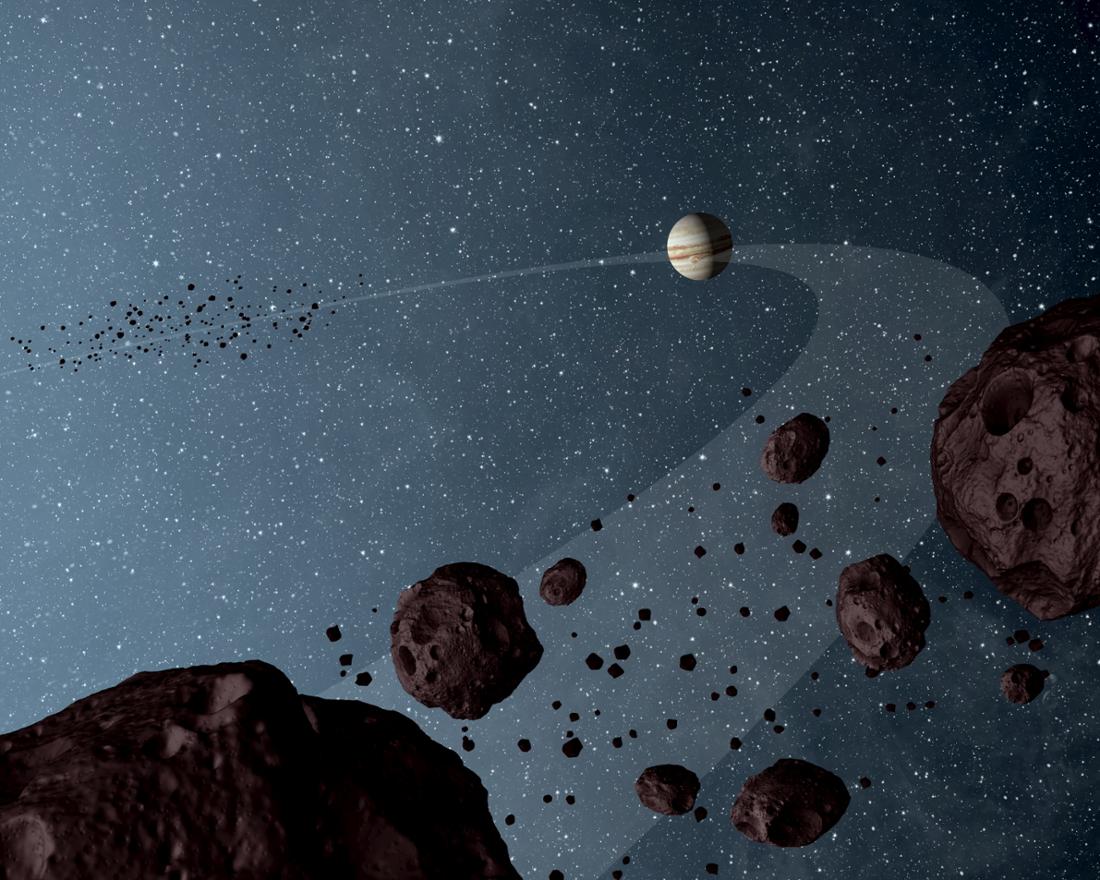The visit of the “Lucy” probe to the asteroid Dinkinesh continues to cause excitement. Researchers have made an observation on its newly discovered moon.
Washington DC – When the NASA space probe “Lucy” flew past the asteroid Dinkinesh a few days ago, it had a surprise in store for researchers on Earth: the asteroid was orbited by a small moon. More data from the space probe has now been downloaded – and the NASA research team has made another surprising discovery: the small moon is actually two small celestial bodies.
Or more precisely: the asteroid Dinkinesh is orbited by a so-called “contact binary”. These are two objects that touch each other. “Contact binaries appear to be quite common in the solar system,” explains John Spencer, deputy project scientist for the Lucy mission. “We haven’t seen many up close, and we’ve never seen a contact binary orbiting an asteroid,” Spencer said in one NASA announcement.
NASA’s “Lucy” probe flies past an asteroid – it has an unusual companion
In fact, shortly before visiting Dinkinesh, the researchers on the “Lucy” mission suspected that the asteroid could have a moon. “But we never suspected anything so bizarre,” emphasizes Spencer. The flyby of Dinkinesh was actually planned as a test for the space probe: Are all the instruments working as they should? Will “Lucy” be able to autonomously track an asteroid that she is flying past at 16,000 kilometers per hour? NASA is satisfied with the test results.
| Dinkinesh (+ Companion) |
| 52246 Donaldjohanson |
| 3548 Eurybates and satellite Queta |
| 15094 Polymele and satellite Shuan |
| 11351 Leucus |
| 21900 Orus |
| 617 Patroclus and Menoetius |
Even though the asteroid Dinkinesh and its contact binary moon are already far behind the spacecraft, the research excitement has not subsided: “It’s puzzling, to say the least,” said Hal Levison, lead researcher for “Lucy.” “I never expected a system that looks like this. Above all, I don’t understand why the two components of the satellite are similar in size. It will be a lot of fun for the scientific community to find out.”
“Lucy” space probe gives research an exciting task
“Lucy” program scientist Tom Statler is excited about the task: “It’s really wonderful when nature surprises us with a new mystery. Great science forces us to ask questions we never knew we needed to ask.”

The “Lucy” space probe continues to fly through space and is expected to examine several asteroids in the orbit of the planet Jupiter (the so-called Jupiter Trojans) in the coming years. Meanwhile, scientists at NASA are downloading more data from “Lucy’s” visit to the asteroid Dinkinesh. It cannot be ruled out that further surprises await the researchers. (tab)

